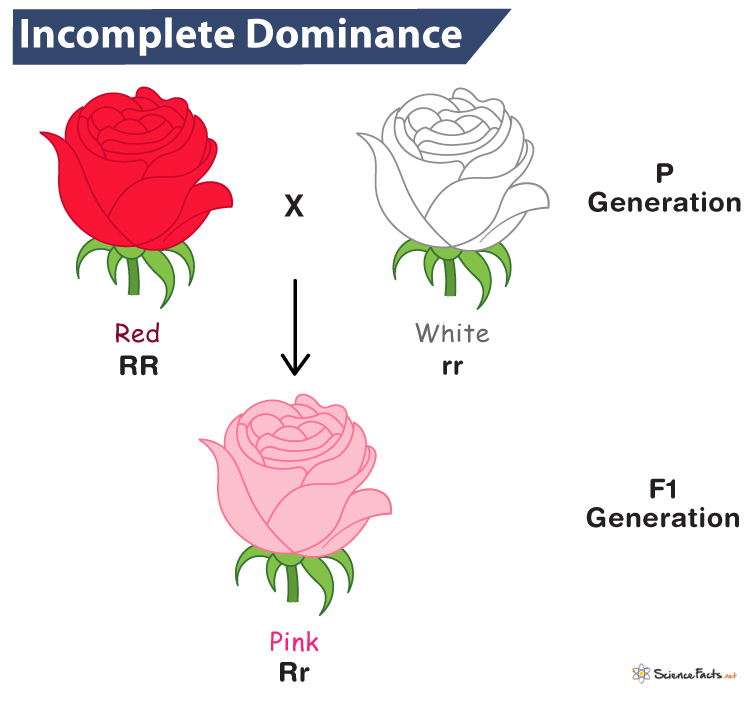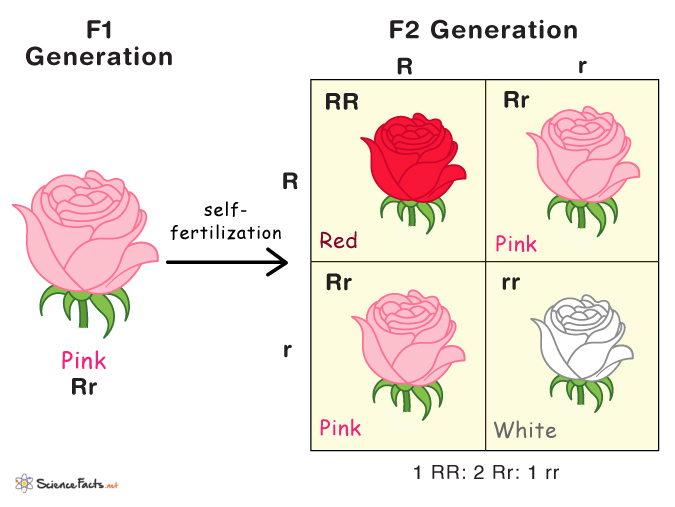Although not the most common form of expression, polygenic traits such as height, weight, eye color, and skin color in plants, animals, and humans display incomplete dominance. After the discovery of the laws of inheritance by Gregor Mendel, the term incomplete dominance was proposed by the German botanist Carl Correns while studying four o’clock flowers.
Mechanism of Incomplete Dominance
Other Examples of Incomplete Dominance
Keeping Mendel’s work under consideration, the mechanism of incomplete dominance can be easily understood using Carl Correns’s experiment on o’clock (Snapdragon) plants. He used a true-breeding (homozygous) red flower RR with two dominant red alleles. Then, he crossed it with a true-breeding (homozygous) white flower rr with two recessive and corresponding alleles. Their F1 offspring are all heterozygous Rr, producing intermediate pink flowers Rr. This type of relationship between alleles is called incomplete dominance. When the F1 generation plants were self-pollinated, they produced red RR, pink Rr, and white rr flowers in a ratio of 1:2:1. This genotypic ratio is the same as that of the monohybrid cross result by Mendel. However, the phenotypic ratio has changed from 3:1 to 1:2:1. The result can be explained by the incomplete dominance of the allele R over the allele r. It forms a third phenotype, a blend of the two parental phenotypes.
Incomplete Dominance Punnett Square
The botanists use the Punnett square to understand the mechanism of incomplete dominance and verify if it follows Mendel’s laws of inheritance. When we express the result of the above breeding experiment in the Punnett square, it displays incomplete dominance as shown: Self-pollination of the F1 plants produces offspring with phenotype 1 red: 2 red/white: 1 white. Thus, alleles are still inherited according to Mendel’s laws, even when they show incomplete dominance.

